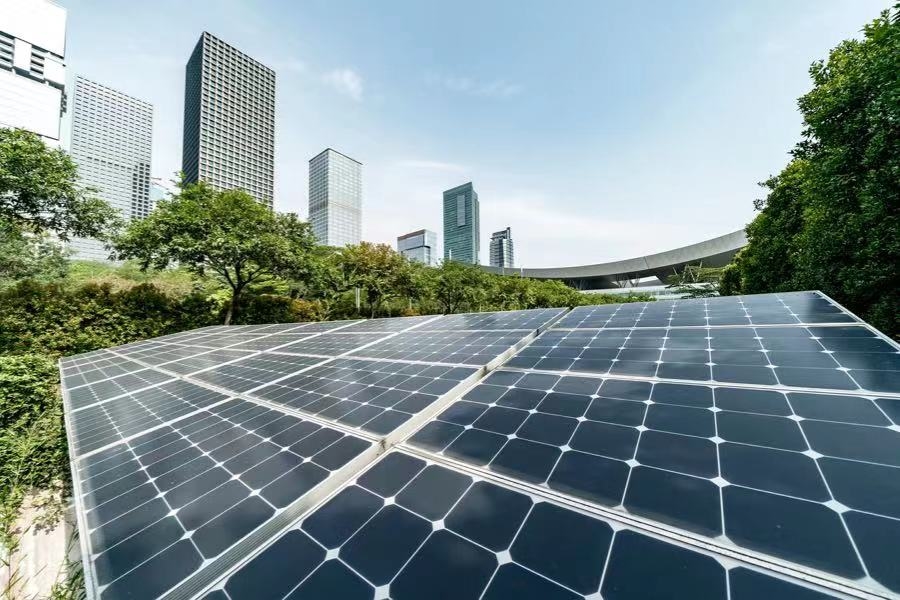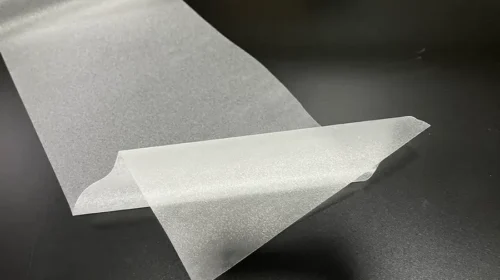JinkoSolar Taps China Unit to Raise $1.5 Billion for New Projects

Leading solar panel maker will take advantage of a significantly higher valuation for its Shanghai- listed unit to raise money through a convertible bond issue
Key Takeaways:
- JinkoSolar will issue up to 10 billion yuan worth of convertible bonds through its China-listed subsidiary to help fund two major new projects announced earlier this year
- The fundraising takes advantage of a major valuation gap between the U.S.-listed company, which trades at a P/E of 40, and the China-listed unit, whose P/E stands at around 130
By Doug Young
There’s no question that solar panel makers are quickly becoming the latest hot commodity on financial markets, as advanced western economies race to build new solar farms to lower their carbon footprints. That race has gained new momentum this year following Russia’s invasion of Ukraine, which has made the west even more eager to install renewable power in a bid to wean itself from Russian oil.
But hotness is a relative thing, especially when it comes to stocks. What’s hot in the U.S. is even hotter in China these days, as reflected by a huge valuation gap between U.S.-listed Chinese stocks and their China-listed equivalents that trade at far higher valuations.
The latest company to take advantage of that gap is solar panel powerhouse JinkoSolar Holding Co. Ltd. (JKS.US), which last Thursday announced a plan to raise 10 billion yuan ($1.5 billion) by issuing convertible bonds through its similarly named China-listed unit, Jinko Solar Co. Ltd. (688223.SH). Investors in both the U.S. and China gave the plan a lukewarm reception, bidding up the companies’ shares by 2.7% and 0.3% the day of the announcement, respectively.
While both stocks rose, and one might argue the 2.7% gain for JinkoSolar’s U.S. shares was a respectable gain, both vastly underperformed other solar shares that have been extremely hot in the past few days for the reasons we described above. Chinese peer Canadian Solar (CSIQ.US) rose 5.7% the same day as JinkoSolar’s announcement, and U.S. peer First Solar (FSLR.US) jumped 15%. The broader Invesco Global Clean Energy ETF was also up 6.2% that day.
We’ll examine shortly what may have happened with the two Jinko stocks on the day of the announcement, and what lessons investors might take away from that.
But first let’s review the announcement and why JinkoSolar chose to issue the convertible bonds using its China-listed unit. The 10 billion yuan in convertible bonds will have a six-year term, and proceeds will be used for solar cell and module production and working capital, according to the announcement.
The big fundraising appears related to another JinkoSolar announcement earlier this year when the company announced two major new manufacturing projects requiring 20.8 billion yuan in investment – meaning the new fundraising will cover about half that amount.
One of the projects will see JinkoSolar build monocrystalline silicon pull rod production lines in the city of Xining in interior Qinghai province, with a total annual production capacity of 30 GW. That project will cost 10 billion yuan over two phases, with the first to be completed by 2024. JinkoSolar is co-developing the project with several Qinghai government entities.
The second project is in JinkoSolar’s hometown of Shangrao, and will see the company co-invest 10.8 billion yuan with Shangrao’s Guangxin District government on a facility making solar modules with annual capacity of 24 GW.
Both projects should help JinkoSolar consolidate its position as one of the world’s top solar panel makers, following a decade of cutthroat competition among a large field of solar panel makers both in China and abroad. JinkoSolar now controls about 15% of that pie, and previously forecast it would sell between 35 GW and 40 GW of panels this year out of about 250 GW in new solar panel installations it expects for the entire industry worldwide.
Cheap money
Next we’ll look at JinkoSolar’s decision to use its China-listed unit to raise the money instead of issuing the bonds through its U.S.-listed unit. The China-listed unit is 58.6% owned by the U.S.-listed JinkoSolar.
For one, most or all of the funds will likely go to the two projects mentioned above, which are both in China. Thus, it makes more sense to raise the funds in Chinese yuan rather than U.S. dollars, since the funds will be spent domestically.
But more important, the China-listed company’s stock trades at a huge premium to the U.S.-listed JinkoSolar’s shares.
More precisely, the U.S.-listed JinkoSolar currently trades at a price-to-earnings (P/E) ratio of about 40, or roughly a third of the ratio of 130 for the China-listed unit. That means that raising money using the China unit is one-third the cost of using the U.S.-listed unit – a huge gap that is not uncommon between Chinese companies that have both U.S. and China-listed shares.
JinkoSolar spent much of its life as a company whose shares were only traded in the U.S., with a New York listing dating back to 2010. It floated shares in China less than a year ago on the country’s Nasdaq-style STAR Market, which is more open to this type of high-growth, emerging industry private company than China’s older main boards in Shanghai and Shenzhen.
JinkoSolar’s decision to finance this latest expansion using its China-listed unit follows a similar move by polysilicon maker Daqo New Energy (DQ.US), which in January announced it would use its China-listed Xinjiang Daqo New Energy Co. Ltd. (688303.SS) unit to raise 11 billion yuan to help finance a massive new production facility. Similar to JinkoSolar, Daqo’s U.S.-listed shares trade at a P/E ratio of just 4, or a third of the ratio of 12 for the China-listed unit.
Next there’s the question of why this fundraising plan that looks quite savvy received such a tepid investor reaction. While the two Jinko stocks only rose marginally the day of the announcement, the China-listed shares are actually up by 30% since July 19, leading us to suspect the news was already in the market a week or two before the actual announcement. Such leakage is unfortunately all too common in China, where insider trading is rampant.
The U.S. shares were also up over that period, but by a far smaller 10%, indicating U.S. investors were probably unaware of the news until the official announcement. That could provide a valuable lesson for buyers of U.S.-listed Chinese stocks with China-listed units, namely to watch the Chinese shares for potential big moves spurred by news that has yet to be formally announced.
At the end of the day, this latest development looks quite good for JinkoSolar and its China unit, showing they will be able to maintain their market leading position using cheap money raised by the China unit. Perhaps that helps to explain why even though JinkoSolar’s U.S. P/E is far lower than its China unit’s, the U.S. ratio is still ahead of its U.S.-listed peers like First Solar at 38 and just 28 for Canadian Solar.
To subscribe to Bamboo Works free weekly newsletter, click here






